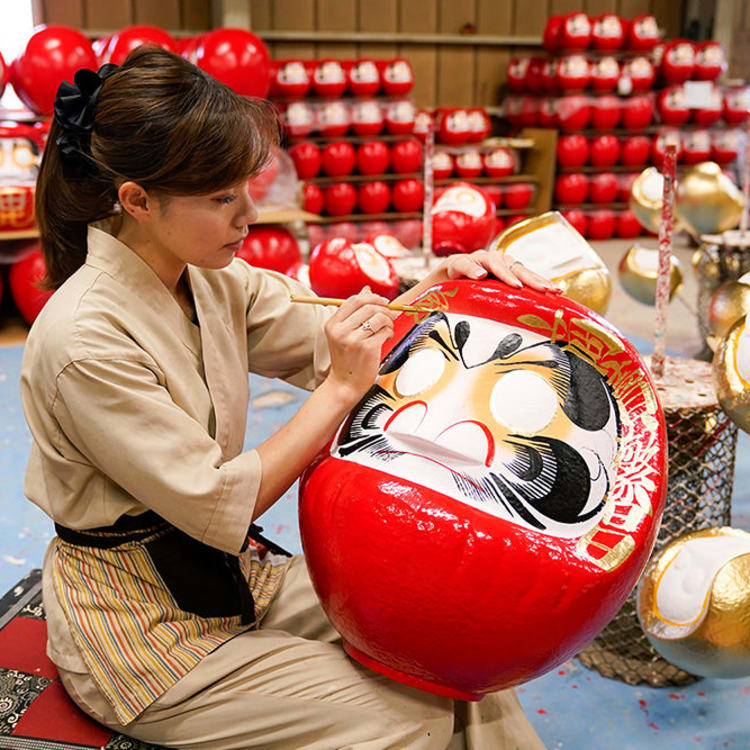
Story Take Part in 400 Years of Lively Tradition at the Maebashi Hatsuichi Festival One of the Highlights Involves Burning Daruma in Anticipation of a Good Year By JNTO on 5 January 2023
Banner image courtesy of ©Gunma Prefectural Government
In Japan, many New Year traditions are closely associated with rituals of purification and renewal. In the old castle town of Maebashi, the Maebashi Hatsuichi Festival has been held every January since the 1600s.
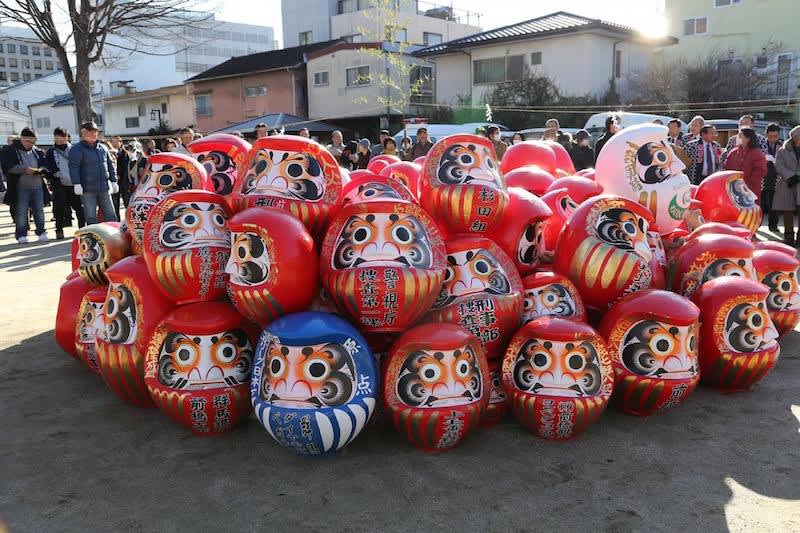
©MAEBASHI CONVENTION & VISITORS BUREAU
This long-running festival typically includes traditional performances, a huge market with many stalls and even a parade of symbols of deities, including a mikoshi, a Japanese wooden float. However, its main attraction is the Daruma bonfire. Daruma are traditional Japanese good luck charms for making a wish or setting a goal. During the festival, these mascots are burnt as a form of appreciation for the good fortune received in the past year.
Daruma: An Icon of Gunma Prefecture
The round-shaped bearded Daruma has long been a good luck charm in Japanese culture. A popular belief is that they were created by a temple monk at Shorinzan Darumaji Temple in Takasaki City to help farmers during a period of famine about 200 years ago.

©Gunma Prefectural Government
Since then, Gunma Prefecture has become the biggest Daruma producer in Japan, with Takasaki City responsible for a formidable portion of the production. Traditionally made using the paper-mache technique, most Daruma are individually hand-painted by master craftsmen with skills honed through years of experience.

©Gunma Prefectural Government
Daruma may look similar to one another but look closely and you will realise that each design is different. Every colour has its own meaning. Red, the most commonly seen colour, represents good fortune and is recommended for general wishes. As for the other colours, they can have more than one interpretation. The general guide is that gold or yellow is for wealth, pink for romance, white for peace, green for health and wellness, and blue for academic success.
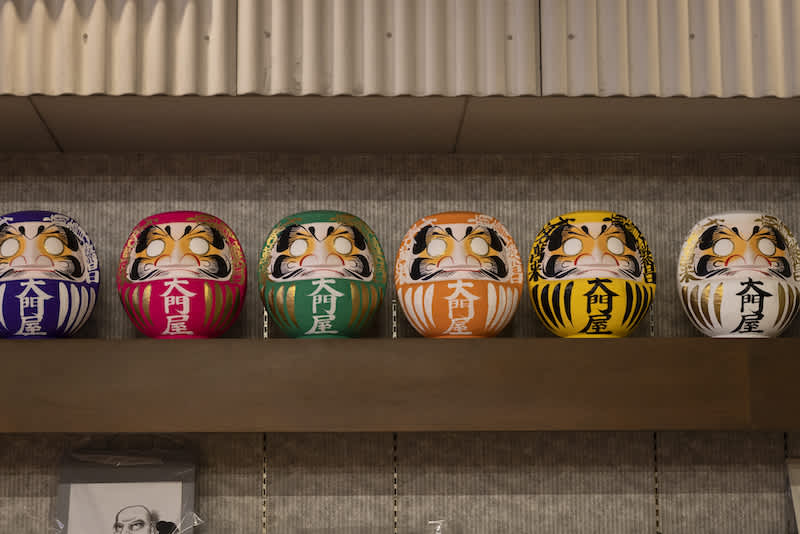
©Gunma Prefectural Government
The Daruma's facial features are also a representation of longevity. Its eyebrows are shaped like cranes and the beard resembles the shell of a tortoise, derived from the Japanese saying that "the crane lives 1,000 years, the tortoise 10,000".
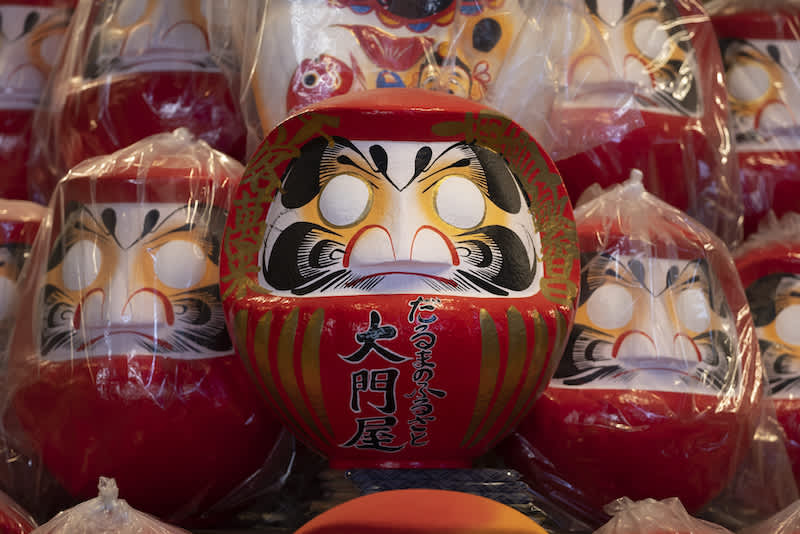
©Gunma Prefectural Government
The eyes of a Daruma are blank when first bought. One fills in the left eye when they have made a wish, and the other eye is filled in when the wish comes true.
More than just a good luck charm, Daruma are a constant reminder of perseverance and an encouragement to keep on working hard to achieve your goals. Owing to the design of the Daruma, it swings back upright when pushed over, which embodies the Japanese “ganbaru” spirit of picking yourself up and trying again no matter how arduous the journey is. Even if your wish or goal is not fulfilled, it is tradition to burn the doll and strive to do better the next year.
One of the Oldest Daruma Festivals in Japan

©MAEBASHI CONVENTION & VISITORS BUREAU
At the start of every new year, the much-anticipated Maebashi Hatsuichi Festival fills the streets of Maebashi City with excitement. People bring their old Daruma from the past year and burn them in a massive blazing bonfire to give thanks for their wishes being fulfilled.
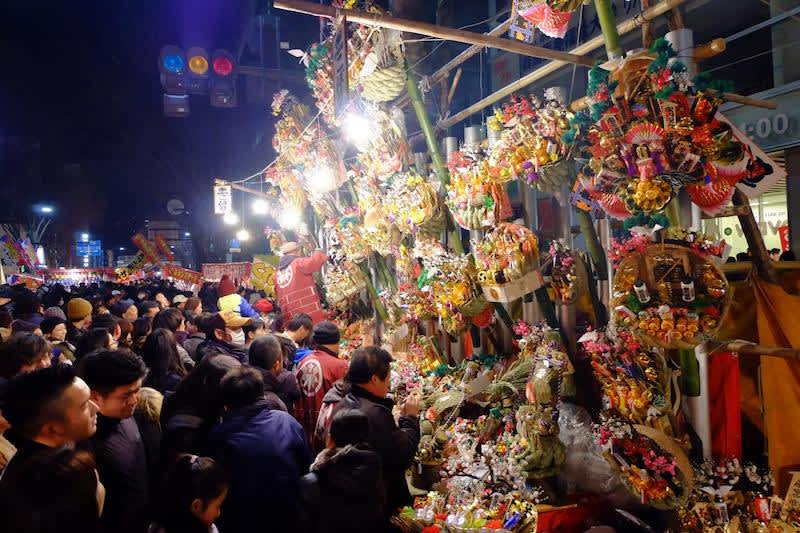
©MAEBASHI CONVENTION & VISITORS BUREAU
Here at the festival market, visitors can purchase a new Daruma to make wishes for the coming year. The streets of downtown Maebashi are lined with many stalls selling all kinds of Daruma and other good luck charms; there are also festival foods and even potted plants.
Address: Maebashi Central Shopping Distric (Honmachi 1-chome) and Maebashi Hachimangu Shrine (Honmachi 2-chome), Maebashi, Gunma Prefecture, 371-0023 Japan
Date: 9 January every year

























































